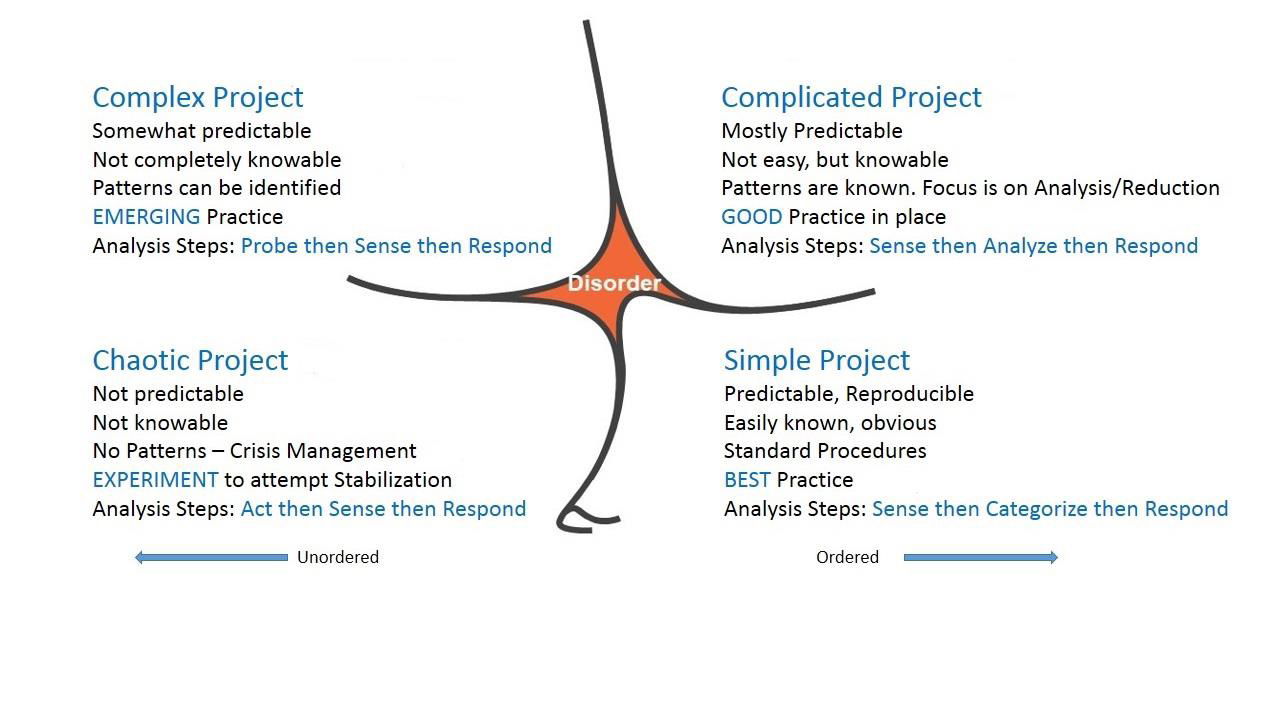Philosophies & Insights
Innovation for Expense Reduction &/or Revenue Capture
In any organization, finances are key, particularly expense reduction and revenue capture. In my roles, I've found that the ability to innovate, leading to successful change, is a key determinator in an organizations finances.
Uniting behind a Strong Vision
At any level of leadership, the ability to form, understand, articulate, and have team members "get behind" a strong vision is paramount. As teams become more in tune with the corporate/department/team vision, they become more accountable, self-managing, and productive. No amount of management skill, process, or tools can take the place of this basic truth.
A Philosophical Framework
The Cynefin Framework (thecynefin.co) is an instrumental tool in envisioning how to solve challenges that are often associated with projects, programs, and operations. Utilize this to help your staff navigate through anything from day-to-day conversations to large issues.

Continuous Listening
Experts, with years of experience in their chosen disciplines, must continue to listen and learn to those who have less experience. New team members bring new insights, that if acted on, not only improve team/employee engagement and alignment, but also improve operational excellence. Via Continuous Listening, executives can remain thought leaders and leverage the team’s creative problem-solving abilities for the good of the organization.
Business Connectivity
A strong link from Strategy to Execution to Operations is key. Corporate value (as measured by timeliness, efficiency, productivity, and ROI) is realized when corporate strategies are strongly tied to action-focused implementations and then flow into sustained and efficient operations. Often, this “linkage” is weak or missing, resulting in initiatives that produce much less than the desired outcomes.
Team Routines
Just as an individual can establish routines to improve business or personal performance, teams can also utilize routines to charge productivity.
- Routines help navigate people, processes, and politics within other departments.
- Routines can link "other-department" policies and processes together in a way that simplifies interactions.
- Routines focuses on people, rather processes or politics, which aids in long term inter-departmental cooperation.
For example: A project manager often works across departments (i.e. IT, Finance, Engineering). However, due to the (often siloed) processes and policies within those departments have their "way of doing things" which might be in conflict. Using routines, a project manager will understand who they should interact with in other departments, how to interact with them and the order in which you interact with these departments.
Agile?
Agile techniques are great tools to quickly bring product to market. At it's base "scrum" level, agile allows technical teams to work with a minimum of overhead. Scaled Agile expands on those base techniques by providing a framework for larger organizations to take advantage of "scrums.' However, this creates overhead and therefore must be managed and "subscribed to" in order for SAFe to provide value to an organization.
Collaborative Leadership
Collaborative leadership drives success. Teams in non-profit, healthcare and technology-related industries are self-motivated, and productive. Therefore, if a leader focuses on staff and leadership development, personal respect, establishing clear accountability, and engaging in strong communication, that leader will reap the benefits of an energized, accountable team, which leads to business success.
The Role of Process
Processes, systems, procedures, and methodologies are tools. And while these tools are of critical importance, teams can’t allow processes or methodologies to supplant collaborative critical thinking. Utilizing Process Excellence (which in itself is a methodology) is how the balance of process, tools, and collaboration is achieved and remains.